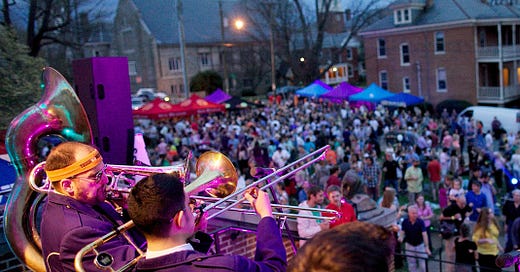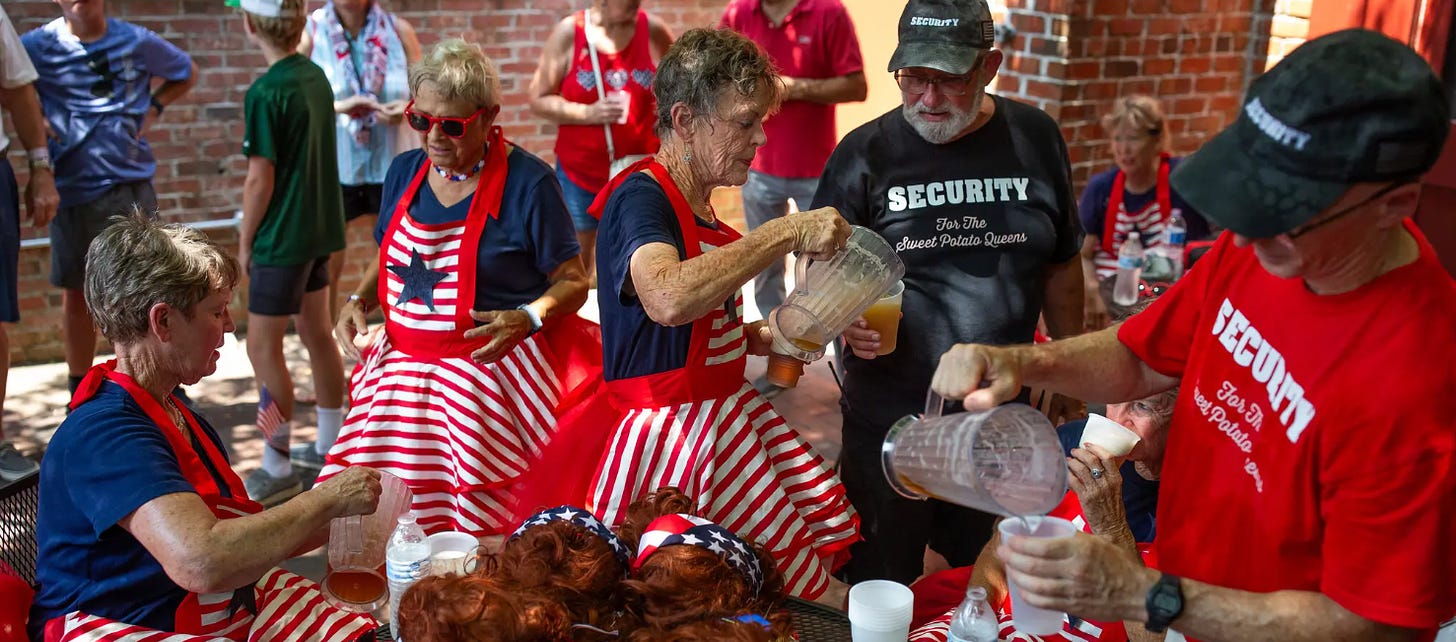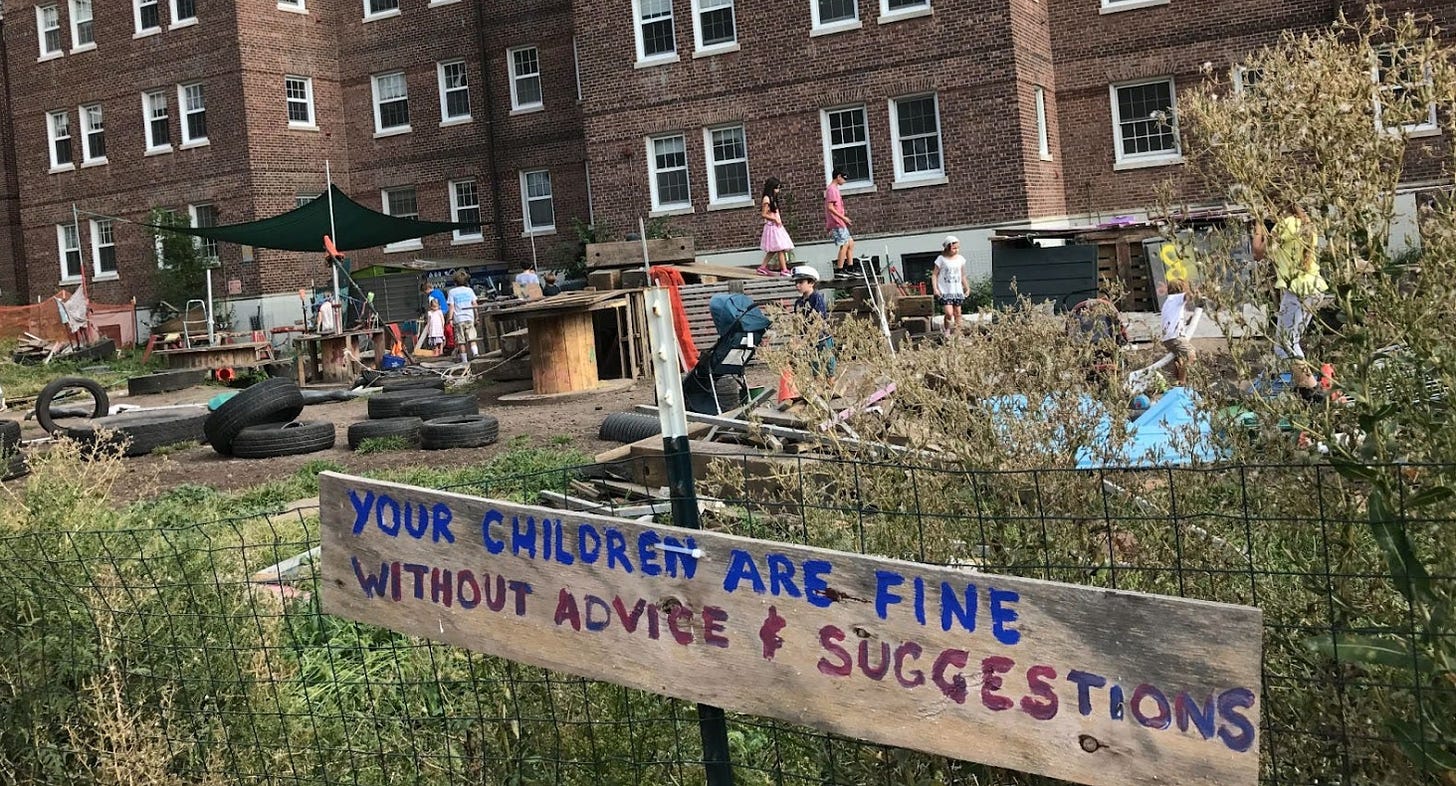“Celebration is not noise. It is not a spinning head. It is not just individual kicks … [When we celebrate, we are creating] a common identity, a common consciousness.”
- Thomas Merton, “The Street is for Celebration”
Much of what’s written about community and peer support focuses on the hard times, from coping with loss, to overcoming addiction, to navigating difficult life transitions. But this emphasis on problems can leave us missing the bigger picture—one that Merton understood deeply. Life in community is as much about celebrating life as it is mourning its loss, as much about finding collective joy in the good times as it is about supporting each other through difficulties. Sometimes, it is these very experiences of celebration and joy that allow us to move through life’s hardest moments.
So, this week, we’re exploring the importance of celebration, joy, fun, and play in bringing people together and anchoring community life:
How can community groups for older adults balance “amusement and mutual support” in the face of the isolation and loss that comes with aging?
What is the role of risky, exciting play in forming the relationships, values, and life skills of children?
What becomes possible when community leaders ask, “how can we make this more fun?”
What do you think? What role has celebration and joy played, if any, in your experience of community? We’re curious to hear your thoughts and we hope you ~enjoy~ some of the reads in this week’s newsletter.
- Sam, Eric, & David
PS: If you’re one of the 40+ new subscribers to Connective Tissue in the past week, welcome! We post these pseudo-thematic curated lists every other week to share what we’re reading and learning. If you ever have any recommended reads for us, don’t hesitate to send them our way.
The Reads
New York Times - “Their Weapons Against the Effects of Aging: Friendship, and Some Fancy Footwork” by Colbi Edmonds (Feb. 2024)
“We’re ladies, but we also know how to have fun,” Ms. Barnes said. “We can draw the line if we get too risqué.”
The Bodacious Belles are a North Carolina-based chapter of the Sweet Potato Queens, a network of more than 6,500 women’s groups that offer each other “a balance of amusement and mutual support.” The amazing ladies of the Bodacious Belles—ranging in age from 57 to 92—perform at local events, participate in year round social events, and form lasting bonds. But the Belles aren’t just about dancing, karaoke, and movie nights. Many are widows, and they provide a critical support network for their members who are coping with loss and grief. Through it all, the Belles demonstrate how celebration and connection can be an antidote to the isolation that can come with aging.
The Research
After Babel - “Why Children Need Risk, Fear, & Excitement in Play” by Mariana Brussoni (Feb. 2024)
Play—particularly the risky play that involves the potential of getting hurt—is one of the main outlets children have to cultivate friendships, explore their curiosities, and build the skills and confidence to master challenges in life. According to Mariana Brussoni, Director of the Play Outside Lab at the University of British Columbia, all forms of play have declined precipitously over the past 40 years. She outlines the changing nature of play, the drivers of these changes, and how they can be reversed in yesterday’s edition of the After Babel newsletter:
1) Every successive generation of children has seen their outdoor play and freedom shrink. Children’s leisure time has gone down—particularly time spent in unstructured outdoor play—as time spent on academic and screen-based activities has increased. The author writes that, “Between 1975 and 2015, outdoor play among UK children decreased by 29.4 percent, while screen-based activities increased by 22.4 percent.”
2) Risky play has been disappearing since the 1980s as more “intensive parenting” has become the norm. According to Brussoni, “Parents, particularly mothers, have been encouraged to micro-manage their children’s lives … with the intention of enhancing their development and giving them an edge in the race to succeed.” A big driver of this shift toward control is constant messaging that (a) “good parents” must always keep their children safe, and (b) the world is no longer a safe place for children to play. The author believes that parents are focusing on the wrong causes of injury and harm: “What kids are dying from today are mainly car crashes and suicides, not playing outside unsupervised with friends.”
3) To bring back thriving play environments, children need time, space, and freedom. Brussoni proposes that time spent on outdoor play should become more of a priority: parents can create space for it in their children’s after school schedule and schools can carve out more time for recess. She also advocates for myriad changes to space, from shifting municipal planning to prioritize people over cars, to designing more spaces to include “loose parts” (sticks, lumber, rocks, and tarps) that “turn boring and barren play spaces into places of joy and wonder.” Finally, Brussoni asserts that parents need to give their children more freedom: parents can build tighter relationships with neighbors to feel more confident letting their kids out to play, and schools can work with groups like Let Grow to support more independent childhoods.
→ read Brussoni’s full article here.
The Work
The Tom Tom Festival - Charlottesville, VA
The Tom Tom Festival, which is entering its 12th year this April, is a festival dedicated to fostering connection within Charlottesville and imagining the community’s future. Unlike other conferences and festivals that center ideas over celebration and outsiders over residents, fun and local community are at the core of everything Tom Tom does. The festival’s founder, Paul Beyer (a Connective Tissue subscriber), seems to be guided by two primary questions: “How can we make this more fun?” and “How can we invite more of the community to co-create and participate?”
Everyday begins with elements of a traditional conference (topic-focused panels and interviews), but quickly transitions to community-driven programming (e.g., veterans events, pitch nights, workshops) and culminates with a themed evening dance party (e.g., Silent Disco, Paradise, Carnivale). The festival concludes with a two-day block party on Charlottesville’s Downtown Mall that engages 20,000+ visitors each year, and a front porch concert series in one of the city’s historic neighborhoods. In just over a decade in Charlottesville, Tom Tom has become a community staple and an example of what’s possible when we ask: how can we make this more fun?
→ Learn more about Tom Tom here and this April’s festival here.







